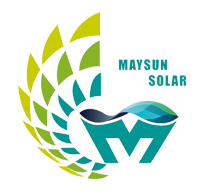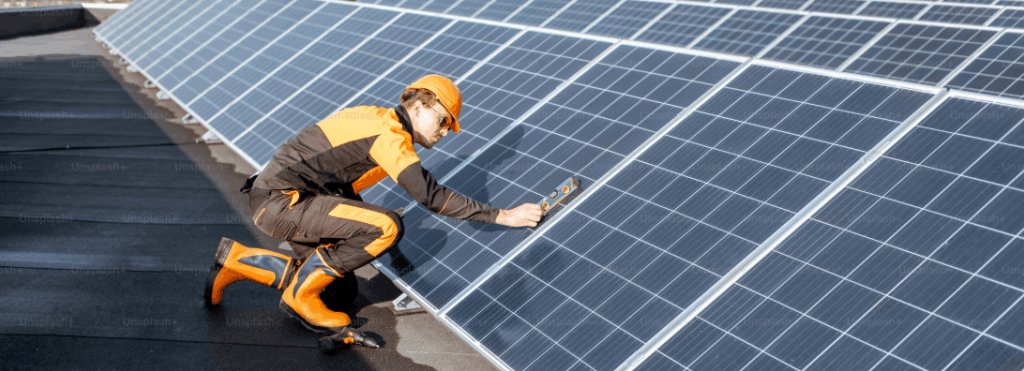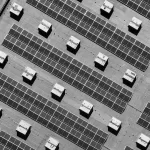Current Status of the Commercial and Industrial Photovoltaic Market in Europe
With the advancement of Europe’s carbon neutrality strategy, commercial and industrial photovoltaics are becoming an important tool for enterprises to control energy costs. However, some projects have failed to achieve the expected returns during actual operation. Due to simplistic design and lack of intelligent management, many systems suffer from low electricity utilization rates and low self-consumption ratios, gradually leading to the phenomenon of “considerable early returns but difficult long-term operation.”
1. High Operating Costs and Low Returns
Although the initial investment returns are considerable, enterprises will begin to face issues such as inverter replacement and module degradation as projects enter the fifth to eighth year. In addition, unreasonable layout of rooftop photovoltaic systems significantly increases maintenance frequency and costs, especially for factory rooftops with complex structures, where later-stage maintenance may require lifting equipment, resulting in operation and maintenance expenses 15%–20% higher than conventional systems.
Moreover, as most traditional photovoltaic systems are not equipped with storage or intelligent dispatch functions, the problem of peak-shifting electricity usage between day and night becomes prominent. Many enterprises have a daytime self-consumption ratio of less than 50%, with the surplus electricity fed into the grid at a low price of around 0.09€/kWh, far below the self-use electricity price of 0.25–0.30€/kWh, further lowering the overall revenue level.
2. Policy Support and Market Prospects
Although there are some uncertainties during the operation of photovoltaic projects, policy support from various countries has provided a positive boost for the development of commercial and industrial photovoltaics.
Italy has proposed to add 70 GW of new renewable energy capacity by 2030, with distributed photovoltaics accounting for about 40%. Germany continues the EEG green subsidy mechanism and simplifies the grid connection process. France, through the CRE mechanism, has further expanded incentives for small and medium-sized enterprise projects.
At the EU level, new policies such as the “Electricity Market Reform Plan” are also promoting the optimization of access processes and improving the priority of photovoltaic project connections. For enterprises with reasonable system design and sound electricity usage structures, achieving stable returns over the next 5–10 years remains a realistic possibility.
How to Reduce Maintenance Costs and Increase Long-Term System Returns
For commercial and industrial photovoltaic users, while the initial returns of a photovoltaic system may be considerable, the later-stage maintenance costs are often underestimated. Once the system design is unreasonable or the component selection is suboptimal, the operation and maintenance expenses will rise year by year, extending the payback period.
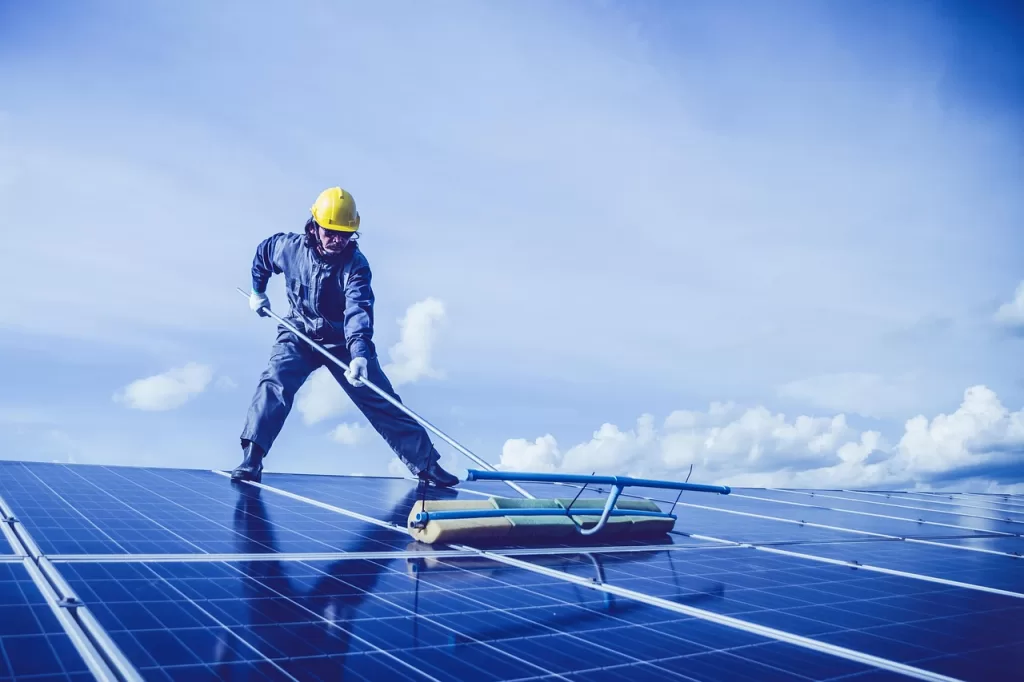
1. Routine Maintenance: Ensuring Long-Term System Operation
To ensure the long-term stable operation of photovoltaic systems, routine maintenance is crucial.
Module Cleaning: Remove dust, bird droppings, leaves, and other obstructions to maintain light efficiency;
Inverter Inspection: Monitor operating status and heat levels to avoid failures and shutdowns;
Electrical System Check: Ensure stable line connections and reduce safety risks.
Depending on the project scale and maintenance method, the annual maintenance cost generally ranges from 8–15€/kW. Although regular inspections cannot completely prevent wear and tear, they can effectively extend equipment lifespan, control efficiency degradation, and maintain stable power output.
2. System Optimization Design: Reducing Maintenance Costs from the Source
To reduce manual intervention and improve operation and maintenance efficiency, more and more enterprises are introducing a “low-maintenance logic” during the system design phase. The main optimization points include:
Automatic Cleaning or Anti-Soiling Modules: Greatly reduce the frequency of manual cleaning;
Durable Material Selection: Use inverters with protection ratings above IP65 and corrosion-resistant mounting structures to enhance system environmental resistance;
Reasonable Layout and Redundancy Design: Facilitate maintenance and improve overall stability.
Comparison Analysis Before and After System Optimization (Example of a 100kW System)
| Item | Conventional System (€/year) | Optimized System (€/year) | Reduction |
|---|---|---|---|
| Module Cleaning | 1,000 | 400 (Automatic) | ↓ 60% |
| Inverter Maintenance | 1,200 | 800 | ↓ 33% |
| Fault Detection | 800 | 500 | ↓ 37.5% |
| Total Annual O&M Cost | 3,000 | 1,700 | ↓ 43% |
Although this optimized design involves slightly higher upfront costs (usually increasing the overall price by 3–5%), the additional investment can be fully recovered within 5–7 years through reduced maintenance expenditures and improved efficiency, continuously generating additional returns.
How to Achieve Higher Investment Returns Through System Optimization
To achieve long-term and stable returns from commercial and industrial photovoltaic projects, initial construction alone is far from sufficient. The real core lies in system optimization design: how to generate more, use more accurately, store better, and fully leverage local policy incentives.
1. Optimized Design to Improve Power Generation Efficiency and System Performance
Reasonable Module Layout: Avoid shading and optimize angles to increase power generation per unit area;
High-Efficiency Inverter Matching: Select inverters that match the module string configuration and voltage requirements to improve conversion efficiency;
Introduction of Storage Systems: Implement “peak-shifting electricity use,” storing electricity during the day and releasing it in the evening to avoid purchasing at peak prices.
2. Rational Use of Peak and Valley Electricity Price Differences and Self-Consumption Ratio
Rationally utilizing the difference between peak and valley electricity prices and improving the self-consumption ratio is crucial for commercial and industrial photovoltaic systems. Through storage systems, enterprises can charge during low-price periods and discharge during high-price periods, thereby increasing overall returns.
Peak and Valley Arbitrage Model: Charge during low-price periods and discharge during peak periods, gaining an additional 0.15–0.30€ per kWh;
Self-Consumption Ratio Improvement: Some factories operate below full capacity during the daytime, and traditional photovoltaic systems feed large amounts of electricity into the grid at low returns. By introducing storage systems and adjusting electricity use strategies, the self-consumption ratio can be increased from 50% to over 70%, significantly boosting the revenue per unit of generated electricity.
Example Data Comparison (Based on European Commercial and Industrial Electricity Prices)
| Project | Traditional System | Optimized System (with Storage) |
|---|---|---|
| Payback Period | 8–9 years | 5–6 years |
| Average Annual Self-Consumption Rate | 45% | 70% |
| Average Revenue per kWh (€/kWh) | 0.12 | 0.18 |
| Peak-Valley Arbitrage Income (€/year·100kW) | 0 | 5,000–7,000 € |
3. Designing Higher-Yield Systems Through Policy Utilization
In Europe, the profitability of commercial and industrial photovoltaic projects depends not only on the performance of the system itself but also heavily on the adaptability to policy frameworks. Compared with simple grid-connected systems, photovoltaic systems that prioritize self-consumption, are equipped with storage, and have peak-shaving capabilities are more aligned with current policy support directions.
For example, Italy’s FER2 mechanism prioritizes systems with load-matching and storage capabilities; Germany’s EEG subsidy structure encourages user-side projects with high self-consumption ratios; France’s CRE bidding mechanism offers better rates for highly integrated and economically efficient solutions.
At the design level, enterprises can transform policy advantages into actual returns through the following methods:
Increase the Self-Consumption Ratio: Prioritize meeting the enterprise’s own electricity needs and avoid selling surplus electricity at low prices;
Introduce Storage Systems: Optimize the load curve and benefit from peak and valley electricity price differences;
Utilize Green Financing or Tax Deduction Policies: Reduce the initial investment burden;
Simplify Grid Connection Design: Evaluate local access conditions in advance and shorten the approval cycle.
A well-designed system not only improves power generation efficiency but also aligns with policy directions, enhancing actual returns.
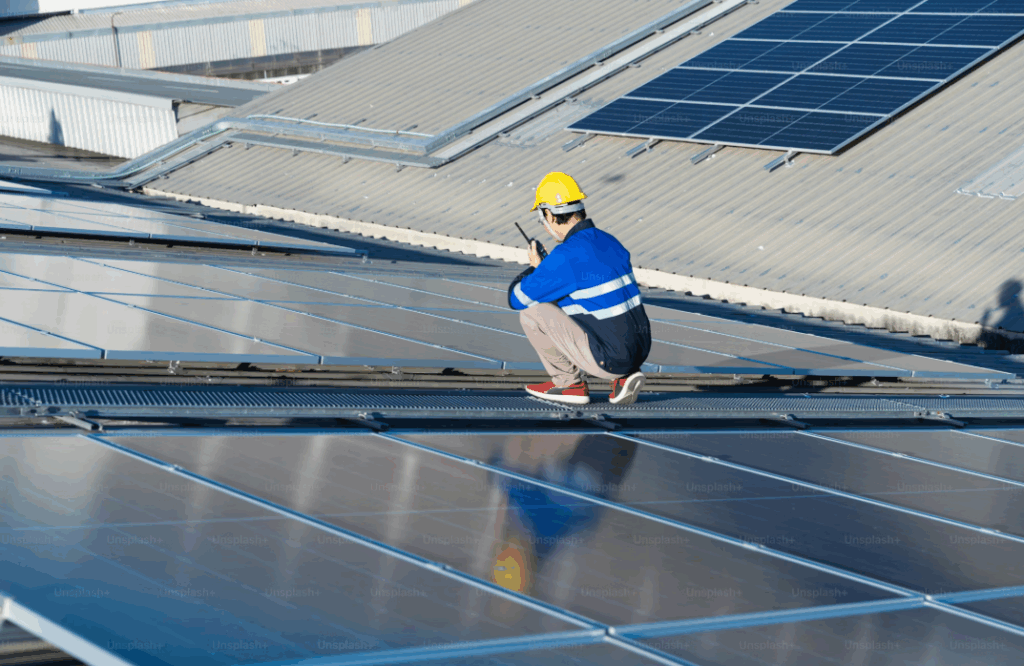
Conclusion
Against the backdrop of Europe’s ongoing energy transition, the long-term returns of commercial and industrial photovoltaic systems no longer depend on the initial investment but stem from deep optimization of system design, operation and maintenance management, and policy adaptation. By selecting more durable equipment, introducing storage systems, increasing the self-consumption ratio, and making rational use of electricity price mechanisms and national incentive policies, enterprises can not only effectively control operating costs but also achieve stable returns amid electricity price fluctuations and changes in subsidies. In the future, only systems with forward-looking designs and flexible strategies can truly achieve the goal of “low maintenance and high yield,” becoming core assets in corporate energy strategies.
Since 2008, Maysun Solar has been both an investor and manufacturer in the photovoltaic industry, providing zero-investment commercial and industrial rooftop solar solutions. With 17 years in the European market and 1.1 GW of installed capacity, we offer fully financed solar projects, allowing businesses to monetize rooftops and reduce energy costs with no upfront investment. Our advanced IBC, HJT and TOPCon panels, and balcony solar stations, ensure high efficiency, durability, and long-term reliability. Maysun Solar handles all approvals, installation, and maintenance, ensuring a seamless, risk-free transition to solar energy while delivering stable returns.
Reference:
European Commission. EU Emissions Trading System (EU ETS) – 2024 Carbon Market Report. Retrieved from https://climate.ec.europa.eu/news-your-voice/news/2024-carbon-market-report-stable-and-well-functioning-market-driving-emissions-power-and-industry-2024-11-19_en
European Commission. Renewable Energy Directive – Targets and Rules. Retrieved from https://energy.ec.europa.eu/topics/renewable-energy/renewable-energy-directive-targets-and-rules/renewable-energy-directive_en
International Energy Agency (IEA). REPowerEU Plan: Joint European Action on Renewable Energy and Energy Efficiency. Retrieved from https://www.iea.org/policies/15691-repowereu-plan-joint-european-action-on-renewable-energy-and-energy-efficiency
Ember. EU Member States Target 66% Renewable Electricity by 2030. Retrieved from https://ember-energy.org/latest-updates/eu-member-states-target-66-renewable-electricity-by-2030-slightly-short-of-the-repowereu-69-goal/
AP News. EU Lawmakers Approve Renewable Energy Target Increase. Retrieved from https://apnews.com/article/6d1a3183a8e84c111146e9db703a13f7
You may also like:

Can Solar Panels Generate Power on Cloudy Days?
This article explains how photovoltaic systems generate electricity on cloudy days and highlights performance differences between various panel technologies. It includes data-driven analysis of system behavior under low-light conditions and is intended for both residential and commercial users.
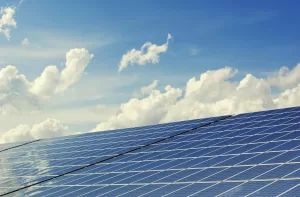
Which solar modules perform better under high summer temperatures?
Can high summer temperatures reduce the power generation efficiency of solar modules? This article compares the performance of HJT, TOPCon, and IBC modules under high temperatures to help you make informed choices and optimize your return on investment.

Structural Risks and Component Adaptation Strategies for Commercial PV Deployment under Extreme Weather Conditions
A comprehensive analysis of the structural risks and component configuration strategies for commercial and industrial PV systems under extreme weather conditions, helping businesses enhance system stability and long-term energy yield.

How Can Photovoltaics Help Businesses Cut Peak Electricity Costs During Summer Price Spikes?
How Can Businesses Use Photovoltaic Systems to Address Summer Electricity Price Peaks? This article provides cost-saving calculations, suitability conditions, and technical selection recommendations.

How to Detect Hotspots and PID Effects in PV Modules to Prevent Long-Term Losses?
How to identify and respond to hotspots and PID effects in PV modules? This article focuses on the European market, combining detection technologies, real-world cases, and protection strategies to provide developers and investors with reliable loss warnings and yield protection solutions.

How to Choose the Most Suitable Solar Panels for Commercial and Industrial Use in 2025
How can commercial and industrial projects choose the right solar panels in 2025?
This article provides a systematic comparison of mainstream panel types such as TOPCon, HJT, and IBC, analyzing their advantages, disadvantages, and suitable applications. It aims to help businesses make accurate selections based on specific project conditions, thereby improving long-term energy output and return on investment.
